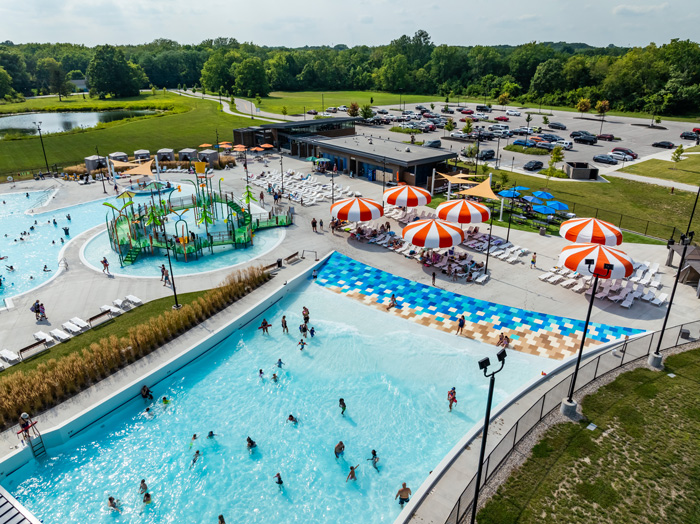For those who operate aquatic facilities, there are many moving parts to consider. And some of the most important ones are, well, actual moving parts: facility maintenance—overseeing everything from pumps to waterslides, water treatment systems to pool liners and decks, filtration systems to diving boards. These are all critical considerations when it comes to keeping visitors and employees safe, and operators require a team of highly skilled people and a plan of attack.
The nonprofit Pool and Hot Tub Alliance (PHTA) offers a Certified Pool & Spa Operator (CPO) program, which is “the world’s leading education program for keeping pools safe and keeping them open,” according to Sabeena Hickman, president and CEO of PHTA. “Over 700,000 students have been trained over the past 50 years, and 2024 was our best year ever with more than 40,000 students earning the CPO certification.”
The CPO certification covers a variety of maintenance considerations, and for those looking to go deeper into the service and maintenance topics, Hickman said “PHTA offers the Certified Pool Service Professional Pathway, which is the only recognized service career pathway in the industry.” This includes four certifications: CPO, then Certified Pool & Spa Maintenance Specialist (CMS), Certified Pool & Spa Service Technician (CST), and finally Certified Pool & Spa Service Professional (CSP).
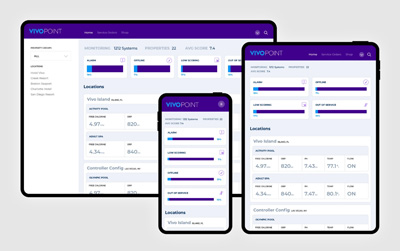
The CMS and CST courses both use the PHTA Service Technician Manual as their guide, according to Hickman, which covers “safety and health, water quality, structures and finishes, circulation, filtration, hydraulics, electricity fundamentals, pumps, heaters, control systems, and maintenance.” She added that the maintenance section discusses “regular maintenance including daily, weekly, monthly, and seasonal checks; types of maintenance equipment (leaf skimmers, brushes, vacuums, etc.); winterizing and summerizing; and chemicals.”
Miklos Valdez is CHAMP director at Counsilman-Hunsaker, which offers a range of services to aquatics facilities including design, engineering, planning, risk management, and facility audits. He stressed that developing a maintenance plan is essential, “whether the facility’s team, your consultant, or a third party does it.” He suggested reviewing plans regularly and making sure they’re compliant with the Model Aquatic Health Code (MAHC) and with manufacturer recommendations, and “as close to day one as possible,” since many maintenance items are warrantied in the first year of operation.
Water Technology Inc. (WTI) provides planning, design, and engineering services to the aquatics industry. Jennifer Hill is a project manager at WTI, a CPO instructor, and has worked in aquatics operations management. She agreed that most well-managed facilities follow a structured maintenance plan, which not only keeps water clean and equipment in good shape, but also helps prevent costly repairs and unexpected shutdowns. “Proper documentation is key; tracking completed tasks, recording water quality readings, and staying on top of equipment upkeep ensures accountability, compliance, and long-term cost management.”
Daily maintenance focuses on essentials, according to Hill. “Testing water chemistry, skimming debris, checking filters and pumps, and keeping pool decks, restrooms, and locker rooms clean.” And staff should confirm that rescue equipment is in place and functional. “Logging these tasks is crucial for tracking trends and making adjustments as needed.
“Weekly maintenance goes a step further with deeper cleaning and system checks,” she continued. This includes backwashing filters, scrubbing pool walls and floors, calibrating chemical feeders, and inspecting mechanical systems for early signs of wear. “Keeping clear records of backwashing schedules, calibration reports, and any maintenance concerns helps identify any potential issues before they become bigger problems.”
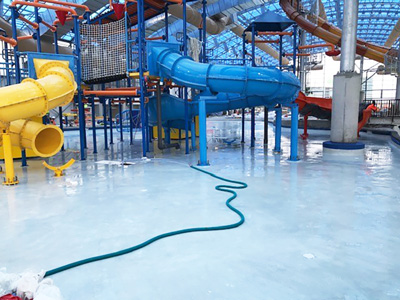
On a monthly basis, facilities take a closer look at plumbing, electrical components, and overall system efficiency, explained Hill. “Checking for leaks, lubricating moving parts, reviewing facility cleanliness, and ordering replacement parts are all part of this routine. Documentation of these inspections helps track equipment performance and anticipate future needs.”
Seasonal maintenance focuses on preparing for high-use periods or shutting down outdoor pools for winter. “This might mean adjusting chemical storage, deep-cleaning pool surfaces, or conducting major mechanical inspections,” said Hill. For outdoor pools, winterization steps like covering, draining, and securing equipment are essential. “Budgeting for seasonal tasks typically involves larger one-time expenses, such as resurfacing pools, replacing covers, or making major upgrades to pumps and filters.”
In North Richland Hills, Texas, Kevin Parsons is maintenance supervisor at NRH2O family waterpark and serves on the PHTA membership committee. He said they have many maintenance checklists, and when adding new products, they start the checklist with items in the manufacturer’s operations and maintenance manual, adding additional items as needed. “It’s important to have this checklist of items written down so everyone knows what needs to happen and when.”
He said the goal is to document regular tasks such as backwashing filters or performing inspections in such a way that anyone who reads it could repeat the procedure. “Of course, you should always periodically review since some procedures evolve over time.”
Parsons believes that every pool operator starts each day with the same goal: safety. During daily routines, he encourages his team to “think about the bigger picture, look at everything, and see how it works together.” For example, if there’s a small drip from a slide onto a support beam, ultimately that beam will start to rust, and now there are two problems. “So just look for issues and try to correct them before they compound into bigger issues.”
Even listening is integral, said Parsons. “If something doesn’t sound right, check it out. I’ve worked here long enough to be able to tell just by the sound in the pump room if a strainer basket is getting clogged or if a valve is closed that shouldn’t be.”
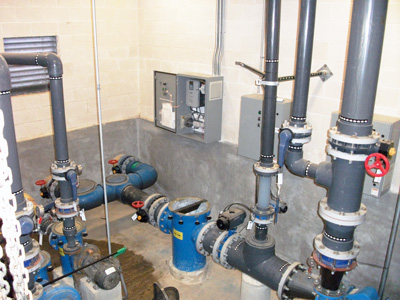
When NRH2O opened, the park used a sand filter system for the wave pool and lazy river, according to Parsons, but several years ago switched to regenerative media filters. “So far we’ve seen a noticeable improvement in water clarity during peak usage without the need for filter aid like we did with the sand filters.” And he explained a task that’s “improved the media life: By opening the sight glass and hosing off the filter elements after dosing a drain-and-fill rinse cycle, the starting pressure differential is lower than just a normal bump/rinse cycle for the same number of rinses. It’s also decreased the time required to change the media since manually hosing the elements removes the old media faster than draining and fill rinse cycles do.”
With pumps, Parsons said it’s important to make sure the motor bearings are properly greased with grease the manufacturer recommends. “If you add incompatible grease or over-grease the bearings, that could lead to premature failure. It’s also helpful to occasionally inspect pump impellers to ensure they haven’t worn down; if you notice flow rate decreases over time, that’s a sign the impeller might be worn or damaged.”
Parsons explained that their splash features utilize a recirculating system with “several solenoids and proximity sensors that control the different features. It helps if you can make sure you aren’t getting buildup on the sensors or any small debris getting past the pump strainer and building up in the solenoid valves.”
And for attractions like slides, Parsons said they do some in-house repairs, “like chips and cracks in the fiberglass. However, the larger projects like resurfacing a slide we’ll contract out.”
Pool shells—whether plaster, fiberglass, or vinyl—require consistent attention to prevent cracks, stains, and surface damage leading to leaks, bacterial growth, or structural issues, according to Hill, and pitted surfaces are especially problematic since they create pockets where algae and bacteria can thrive. Therefore, “skimming, brushing, vacuuming, and crack inspections are essential.” If pools become stained or pitted, resurfacing or acid washing may be necessary.
Decks and surrounding areas require regular care to prevent cracks, uneven surfaces, or slippery spots, which can lead to trip/slip hazards and drainage problems, said Hill. “Daily hosing with disinfectant, weekly checks for loose tiles or shifting slabs, and monthly drainage inspections help keep these areas safe and functional. Seasonal power washing and sealing can further extend the deck’s lifespan.”
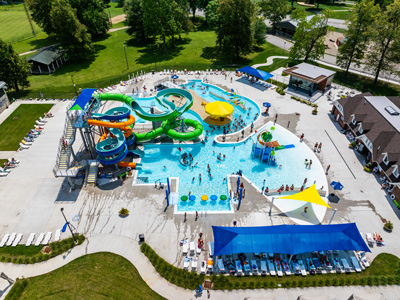
Tile and grout maintenance are important, as damaged or missing tiles allow water to seep in, potentially causing structural damage and making pools look poorly maintained. “Daily cleaning helps prevent calcium buildup, while weekly grout scrubbing and monthly inspections for loose tiles help catch problems early,” said Hill. “Resealing grout lines seasonally is also recommended.” And since expansion joints and caulking play critical roles, “monthly inspections for cracks or shrinkage, along with seasonal reapplications of caulking” are recommended.
Drains, gutters, and water features also need attention to prevent poor circulation, standing water, and erosion, said Hill. “Daily debris removal, weekly inspections, and seasonal power washing of gutters help keep water flowing properly.” Blocked or malfunctioning drains can lead to flooding, pump failure, and even regulatory shutdowns.
Some aquatic facilities choose to contract outside companies for maintenance help. Craig Sears, president of Sears Pool Management Consultants Inc., operating in the greater Atlanta area, won the 2024 PHTA Service Professional of the Year award. He said “Most of my customers rely on us completely for their pool maintenance. A small percentage handle their own maintenance and call us for repair work and renovations. Part of the service we offer is consulting on recommended improvements to their systems for better efficiency and overall system performance.”
Newer technologies continue to make a splash in the aquatics industry. Richard Lindhorn is vice president of a Pasadena, Calif.-headquartered company providing automation, products, and services to the industry. He said chemical controllers have become standard in commercial pool maintenance, “providing real-time monitoring and automated dosing of sanitizers and pH adjusters, ensuring that water chemistry remains balanced without the need for constant manual testing and adjustments.” This can contribute to guest safety and extend lifespans of mechanical equipment.
A trend in this space is the integration of chemical controllers with cloud-based platforms and IoT (Internet of Things) technology, according to Lindhorn. “Modern controllers can now sync with software, allowing operators to monitor multiple locations remotely, receive real-time alerts, and analyze historical data for proactive maintenance.”
Beyond chemical controllers, Lindhorn discussed other technologies making an impact in pool maintenance, including flow and pressure sensors, which “help detect early signs of filter clogging, pump inefficiencies, or leaks—allowing for preventive maintenance.” ORP and pH sensors are “critical for ensuring effective sanitation, especially with fluctuating bather loads.” Turbidity sensors are useful for “monitoring water clarity, which can indicate filtration or chemical imbalances.”
Lindhorn explained that with sustainability becoming a key concern, advanced leak detection and submetering technologies “help operators track water usage and identify costly leaks before they become major problems.” He added that some facilities are “beginning to leverage AI-driven solutions that analyze multiple data points to predict equipment failures before they happen.”
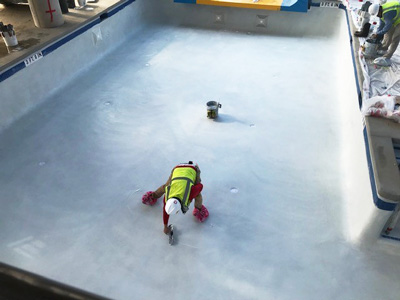
Valdez pointed out that as technologies progress, maintenance technicians need to have a good understanding of computer systems and be able to troubleshoot any issues. “Newer controllers can now read and automate almost anything—HVAC systems, pumps, motors, etc. It can make things easier and safer to operate, but it does change how you have to do that; you have to be a little more tech-savvy or at least be willing to learn.”
In Illinois, Joe Smith is the aquatics maintenance supervisor for the Fox Valley Park District, and he discussed the indoor Vaughan Aquatic Center they operate, featuring multiple pools. “We use chemical controllers on all the pools. They measure in parts-per-million and millivolts which is helpful in keeping our chlorine at the correct levels on a consistent basis. We also use a SCADA system (Supervisory Control and Data Acquisition) to control our filters and to send email alarms in the event we have an issue with the equipment.
“We use erosion chlorine tablet feeders with calcium hypochlorite tablets for our sanitizer,” Smith explained, “sodium bisulfate acid… to control our pH, sodium bicarbonate for alkalinity, and calcium hardness increaser to treat/balance out our pool water. We have UV lights built into our filtration systems to help sanitize our water and to keep our chloramine levels in check.
“We have tile decks on the therapy and competition pools,” Smith continued. “Daily cleaning and monthly power washing keep our decks clean.”
Robotic pool vacuums are used nightly, and “manual vacuums for spot cleaning are used during the day when the pools are closed.”
The pools have plaster finishes. “Besides keeping the chemicals balanced to protect the plaster, we lightly power-wash all pools during the yearly (maintenance) shutdown when the pools are drained. Due to age, we’ve had to patch spots where the plaster has broken.”
Smith said they follow daily, weekly, monthly, and annual maintenance plans. The pools at the Vaughan Center share a mechanical room, but not equipment. Pumps are variable speed with VFDs (variable frequency drives). “We have the pump strainer baskets cleaned weekly, and we have yearly maintenance on all our pumps,” said Smith. Sand filters are used, and “We do yearly inspections of the inside of the filters when we have our annual shutdown. Last August we completed a sand change on all our filters.”
There are also spray features in the leisure pool area, which use their “own pumps for the attractions and are part of the leisure pool system for filtration and chemical feeders.”
Hill pointed out that a well-planned facility design can “lower operational costs, improve safety, and make daily upkeep easier.” One key factor is equipment accessibility, and mechanical rooms should be “positioned for easy entry, with enough space around pumps, filters, and heaters for quick repairs. Pipes and valves should be easy to reach rather than buried or hidden behind inaccessible panels.” Additionally, making things like hose bibs and electrical outlets readily available can “dramatically increase the likelihood that staff will clean these spaces more frequently.”
Hill went on to discuss other considerations in the design phase, including material selection, well-placed inlets and drains, selecting properly sized pumps and filters, utilizing secondary sanitization systems, and automation and remote monitoring. “Backflow prevention devices and water reuse strategies can also help conserve water and maintain regulatory compliance.”
Planning for future repairs and upgrades is also important, according to Hill, which might mean designing with modular, replaceable components, and designing electrical and plumbing systems with flexibility to accommodate potential expansions. “By incorporating these maintenance-friendly design choices from the start, facilities can significantly reduce emergency repairs, lower operational costs, and ensure a safer, cleaner, and more efficient aquatic environment for years to come.”
The pool, spa, and hot tub industry is constantly evolving, said Hickman. “There are new technologies, new equipment, new scientific discoveries, new standards and regulations, so staying up to date is extremely important.” And since CPO and other service/maintenance certifications are only valid for three to five years, and the “Pool & Spa Operator Handbook undergoes regular review and revision, there will always be updated content for students to learn.”
Lindhorn’s company facilitates PHTA’s CPO program. He said a well-maintained aquatic facility is more than just clean water, “it’s a balance of safety, efficiency, and sustainability.” With advancements in automation, remote monitoring, and predictive maintenance, facility operators now have more tools than ever to optimize operations, reduce costs, and extend the life of their equipment. “Staying proactive with maintenance not only ensures a great guest experience, it also protects a facility’s bottom line.”
“In the end, while mechanical systems are crucial to pool operations, regular cleaning, minor repairs, and infrastructure upkeep are just as important,” said Hill. “A proactive approach reduces emergency shutdowns, extends the life of equipment, and enhances the overall experience for patrons. Keeping up with maintenance doesn’t just save money, it keeps the facility safe, welcoming, and running smoothly.” RM

